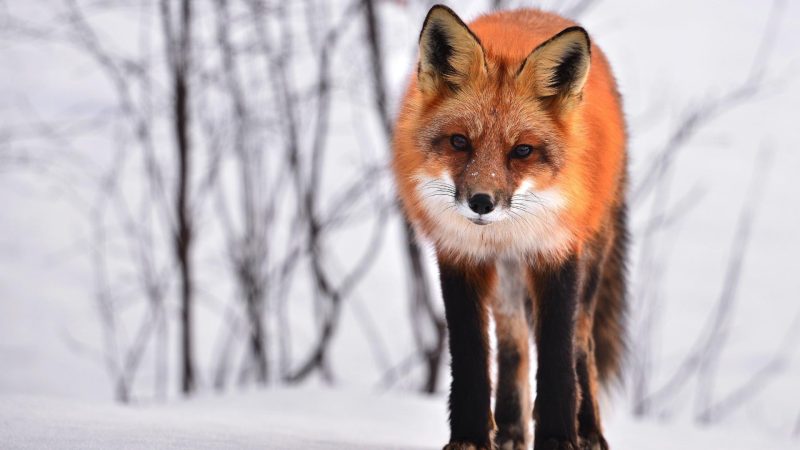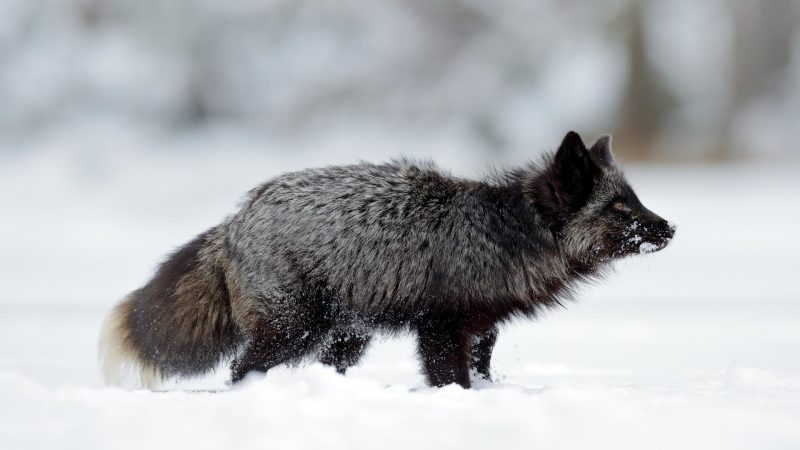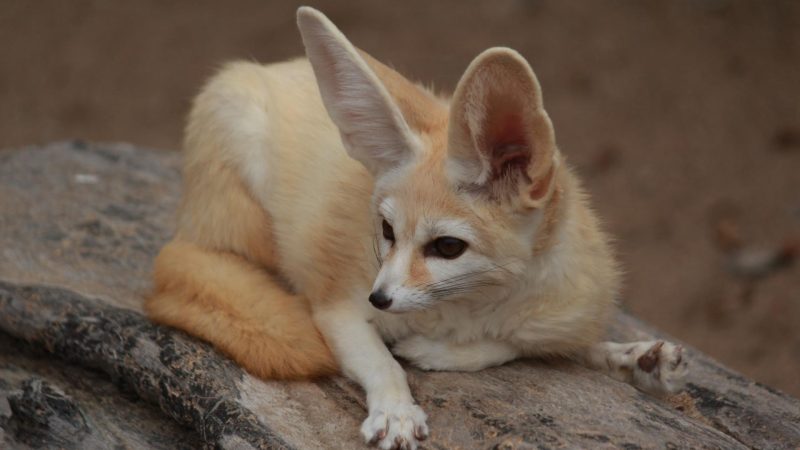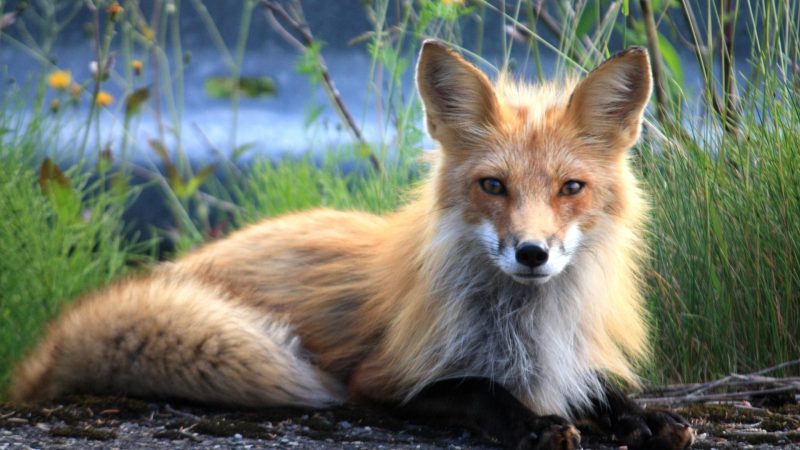Foxes bear unique and attractive coatings. Surprisingly, even the ones that belong to the same species sport various fur colors. These coat colors are also termed ‘morphs.’
What are the different colors of foxes? A fox’s coat color or morph is based on the period of the year that it was born. Some of them change their fur color based on the cycle of the seasons. Nonetheless, the color of the coating of some foxes changes multiple times a year. Others stick with their unique, inborn morphs for their entire lifetime.
Knowing the morph variations even among the same fox species makes you think that foxes are special. Apart from the natural occurrence, dozens of morphs emerge from farms that specialize in fox fur.
You may wonder if there are differences between the natural morphs and the ones developed by humans.
Table of Contents
What Are Fox Mutations?

Fox mutations are the morphs or color variations that occur among foxes. For instance, red foxes can turn black or silver. These mutations happen as a natural course in the wild.
But, many of them are the result of breeding programs conducted in fox fur farms.
What Do the Fox Genes Do?
The fox gene map is used in a study to analyze mammalian chromosome evolution. It’s deemed productive since researchers have discovered many things.
For instance, silver foxes have been in North America for centuries, but silver hair is also seen on red foxes.
As a result of the said study, silver hairs of foxes are under polygenic control, which means that several genes can create the same color.
The variation of fur color on foxes that are the same species is based on the heterozygous gene. It simply means that there are two alleles in a certain gene.
So, a gene can produce two fur colors, and one may be more dominant than the other.
Somatic cell hybridization has a big part of the fox gene map. Identification, segregation, and rearrangements of genes and chromosomes were tackled in this part.
Aside from the high level of genes and chromosomes that segregates accordingly, there’s also a high level of those that discord. Therefore, fox mutations occur.
Melanistic Morph | What Does Melanistic Mean?
A melanistic morph among foxes creates darker fur from a genetic mutation. Melanin that is found in skin and hair is involved in this process. It commonly happens in areas with cold climates. For instance, 10% of red foxes go through melanistic morph.
Fox Colors
Blue Frost Fox
This fox is also known as ‘blue-silver fox’ and ‘indigo fox.’ It’s from the combination of silver fox and blue arctic fox. The silver fox appearance is dominant on this species but not the size as there’s variation.
Furthermore, a blue frost fox with a white-tipped tail is a bit larger than a blue arctic fox.
Red Morph

The main color of this fox is orange or red. It ranges from light orange to dark orange or red since it depends on the time of the year. Most of them are orange, and a few are completely red.
A hint of red can be seen on their eyes and ears. This is a common morph because red morph foxes are found in many regions.
Salt and Pepper
The salt and pepper fox has a gray morph with scattered hints of red, orange, black, and white. Its head and chest are light oranges with some white and black spots. The belly is white, while the body has salt and pepper markings.
Blue Fox

This is a unique morph of Arctic foxes. The whole coating is charcoal blue, and there’s a lighter color on their legs and belly. A darker blue or black hue is sometimes seen on the faces and ears. Some arctic foxes have this color which only lightens a bit in winter.
Marble Fox
Referred to as ‘silver marble fox’ or ‘arctic marble fox,’ it’s one of the most popular foxes in pet trading.
Its body is predominantly white, and its face has a black crown-shaped mark that appears like a mask. The black fur can go all the way through the shoulders, back, and tail.
Silver and Black Morphs

Silver and black morphs happen to red foxes. There are variations between black and silver fur color, but they are recognized as the most melanistic.
The ones with the dominant black color morph have some brown specks. A rare case of black fox exists, but no one has ever seen or photographed it.
In the case of the silver foxes, the black-colored part is on their legs, ears, and noses, but they have white tails. You’ll also see silver or white clusters of guard hairs on them.
Cross Fox Morph
A cross fox morph is the work of melanin on 25% of the red fox population. It’s the usual red or orange morph with a bit of black or dark brown from the head up to the tail.
A dark color can be seen from its shoulders to its legs. As you can see, it got its name from the colors that cross on its entire body.
Fire and Ice Fox

The color of this beautiful fox is very light, and it’s pretty diluted. Furthermore, the golden beige hue is the dominant color, but it can vary from light reddish to extremely light beige. It has gray ears, feet, and tail.
Champagne Fox
This is also called ‘champaign pink fox’ or ‘pink fox.’ It’s a mutation of a red fox, and its white-tipped tail is proof. In the 1970s, this fox was presented in Quebec for the first time. The fur is extremely pale gold with hints of peach-orange hue on its tail, back, or forehead.
Platinum Fox

Introduced by a Norwegian farm in 1933, this platinum fox has a gray coloration that has a lot of white furs. The gray shade is sometimes darker or lighter. The white spot is usually found on its chest, belly, feet, muzzle, forehead, and neck.
Arctic Fox Colors
The two natural morphs on arctic fox colors are white and blue. Among them, the white morph is the most common with darker hairs on the stomach and tail.
The blue morph remains with a dark charcoal hue most of the time, and it lightens a bit during winter. You may find arctic foxes in other colors which were developed in laboratories.
Desert Fox Colors

Although desert foxes are in various sizes, the majority of them have small frames. They have cream and tan shades. Some are in peppered color like gray foxes.
Gray Fox Colors
The salt and pepper coloring of a gray fox comes with other hues such as red, orange, black, and white. The orange spot with a bit of white is usually on its chest or head.
While the body is salt and pepper with some hint of gray, the underbelly is white. Its back sometimes has black stripes, and its tail can have a black tip.
Other morphs for gray foxes are white and leucistic. The white morph is all white, and leucistic is beige or tan with a white chest and underbelly. There’s also a rare melanistic gray fox with a body that is completely black including its nose.
Related: Types of Foxes | Explained (with Pictures)
Why Some Foxes Change Color?

There are several reasons why foxes change their colors. Red and arctic foxes change their color when they begin to shed. It happens in summer, so they feel comfortable and cool.
Based on a study that tackles the Arctic fox genes on morphs, a single Mendelian gene causes the white fur to turn blue in the wild. Moreover, environmental conditions cause changes in the melanocortin system of foxes.
Thus, red foxes adapt to their environment, and they turn either red or gold based on the time of the year. In spring and summer, Arctic foxes display gray or brown colors to mimic the color of the earth.
But when winter comes, they turn white. Some foxes have a mutation in different growth stages.
The findings of the said study disclosed other reasons behind morphs. They take place not just for aesthetics but for higher fitness and survival. However, females show higher fitness than males.
On the other hand, both genders gain enhancement on fertility and receptivity when going through morph. As proof, there are more spermatozoa released by blue foxes than white ones.
Frequently Asked Questions
What Is the Rarest Fox Color?
Sierra Nevada red fox is the rarest fox color. It has a yellowish to a reddish-brown coating that sometimes turns into silver or black. There are nice dark brown markings on the top of its ears, while a white covering is on its stomach and chest.
It has a bushy tail with a white tip. This long tail almost touches the ground, so it impacts the dimension of its length.
This fox is smaller compared to the foxes that dwell in low areas with a weight of 2 to 4 kg. The body of this creature is slender as well as its legs. It has pointed ears and a narrow pointed muzzle.
What Is the Most Common Fox Color?
The most common fox color is seen on red foxes since there are 47 subspecies. They are born with brown or black color, and the reddish hue develops in their second or third month.
Their color varies from light orange that may also appear dark yellow to a darker shade of orange. In addition, there are black hairs on their tails, ears, and feet. It’s a white covering on their stomach and chest.
What Is the Best Looking Fox?
Fennec is the best-looking fox. It’s a desert dweller that has soft, long, and thick fur in reddish cream, light fawn, or almost white color. It has a bushy tail with a white tip. In terms of size, it’s the smallest among the canids, but it has the largest ears.
Fennec is also the palest among foxes, and this trait is for the camouflage effect. With its small size, large ear, and pale color, it’s the best-looking fox.
Summary
The color variations also occur among similar species, so foxes display a wide range of coating. It happens due to environmental conditions and for the survival of foxes. Although you have to go through a long list of fox mutations and morphs, it won’t be too hard when you’re interested in them.
List of Sources
Rubtsov, N. B. (1998). The Fox Gene Map. ILAR Journal.
Tietgen, L., et al. (2021). Fur colour in the Arctic fox: genetic architecture and consequences for fitness. Proceedings Biological Sciences.
Fennec Fox. Smithsonian’s National Zoo & Conservation Biology Institute.
Sierra Nevada Red Fox Description and Biology. (2018). National Park Service – U.S Department of the Interior.
